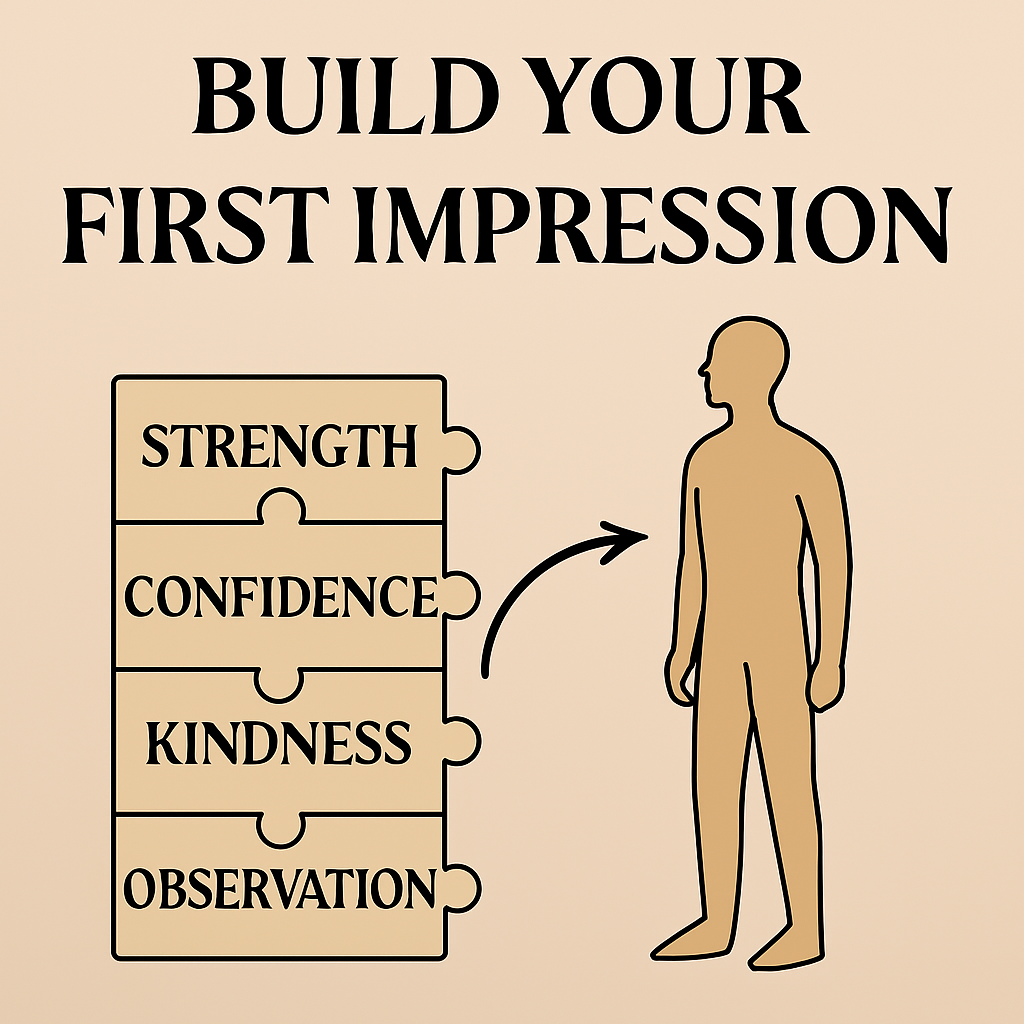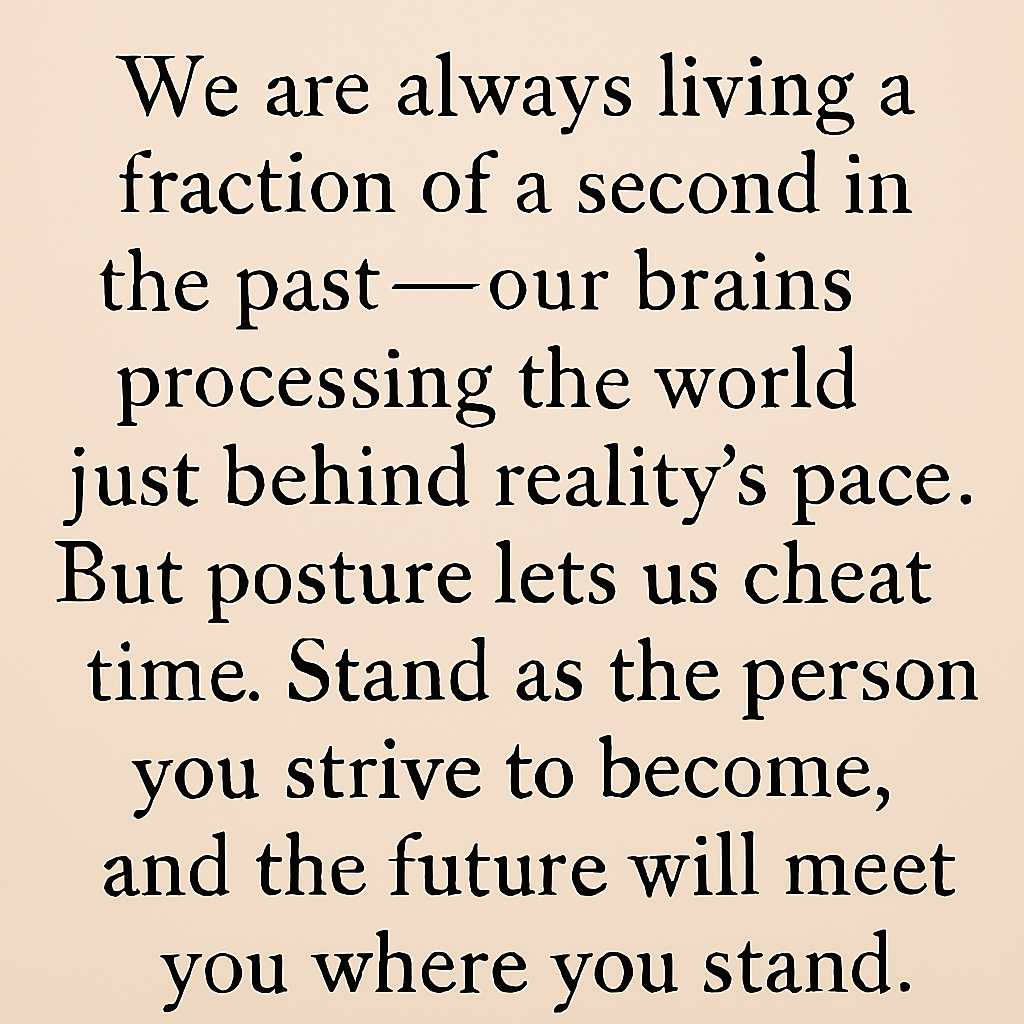First Impressions: How Posture Speaks Before We Do
The first step to change is to change your first step.
The moment someone walks into a room, before a single word is spoken, we already know something about them. How? Posture.
Our brains process body language in milliseconds—assessing confidence, emotional state, safety, and even potential danger. This isn’t just social intuition; it’s neurological survival. The nervous system is constantly scanning, adjusting, and reading the silent signals of movement and stance.
What Posture Communicates at First Glance
Before we even think about words, our posture conveys:
Confidence vs. Submission (expansive chest vs. hunched shoulders)
Openness vs. Defense (relaxed stance vs. crossed arms)
Vitality vs. Fatigue (upright energy vs. slumped weight)
Safety vs. Threat (fluid movement vs. rigid stance)
This rapid analysis happens through a multi-sensory process—our eyes track alignment, our gut registers movement patterns, our nervous system reacts before logic kicks in.
Postural Assessment: What Does Your Body Say?
Take a moment to assess your posture in a mirror or ask a friend for feedback. Look for these key indicators:
Head Position: Is your head upright or tilted forward?
Shoulders: Are they rounded forward or pulled back?
Spine: Is your back straight or slouched?
Weight Distribution: Are you evenly balanced or leaning to one side?
Arms: Are they relaxed or crossed defensively?
Quick Questionnaire: What Does Your Posture Communicate?
Posture isn’t static—it’s a spectrum that shifts throughout the day, reflecting your emotions, intentions, and circumstances. Answer these questions to explore the range of signals your posture might be sending.
1. When you stand in a group, how do you typically position your arms?
☐ Crossed over your chest
☐ Relaxed at your sides
☐ Hands on your hips
☐ Fidgeting or holding an object
→ What it means: Crossed arms can signal defensiveness, relaxed arms show openness, hands on hips suggest confidence, and fidgeting may indicate nervousness.
2. How do you hold your head when walking into a room?
☐ Chin up, looking straight ahead
☐ Chin slightly down, avoiding eye contact
☐ Tilting your head to one side
☐ Looking around quickly, scanning the room
→ What it means: A chin-up position conveys confidence, a lowered chin may suggest shyness, and scanning the room can indicate alertness or nervousness.
3. What is your typical stance when standing still?
☐ Feet close together, weight on one leg
☐ Feet shoulder-width apart, evenly balanced
☐ Leaning against a wall or object
☐ Shifting weight frequently between legs
→ What it means: A balanced stance signals stability, close feet may suggest insecurity, and frequent shifting can indicate restlessness.
4. How do you typically hold your shoulders?
☐ Pulled back and relaxed
☐ Rounded forward
☐ Lifted up toward your ears
☐ One shoulder higher than the other
→ What it means: Relaxed shoulders pulled back convey confidence and openness. Rounded shoulders may indicate stress or fatigue, while lifted shoulders suggest tension.
5. When sitting, how do you usually position your body?
☐ Leaning forward with elbows on the table
☐ Sitting upright with feet flat on the floor
☐ Slouching back in the chair
☐ Crossing your legs tightly
→ What it means: Sitting upright with feet flat on the floor conveys attentiveness and confidence. Leaning forward can show engagement but may also seem intense, while slouching suggests disinterest.
Reclaiming Your Posture & Presence
Since posture shapes perception, it’s worth using it intentionally—not just for impressions, but for overall well-being.
Here’s how:
Ground yourself: Stand tall, feet planted, breath steady.
Open up: Uncross arms, widen stance, release tension in jaw and shoulders.
Breathe deeper: Shallow breathing tightens the body, deep breath expands it.
Move with awareness: Fluid movement signals confidence and ease.
Taking Control: Own Your Posture, Own Your Presence
Your posture is more than just how you stand—it’s how you show up in the world. Make sure you are showing UP and not down. It’s your unspoken introduction, the energy you radiate before a single word leaves your lips. And whether you realize it or not, it’s communicating something to everyone around you.
So what message are you sending? Confidence? Strength? Openness? Or maybe hesitation, retreat, or uncertainty?
Here’s the truth:
You are being judged at first glance. But to be fair, you’re constantly judging everyone and everything around you as well. It’s human nature—an instinct, a survival mechanism, a subconscious way to assess and respond. And while you can’t control how others interpret you, you can control what you project.
Start Communicating Through Your Posture—Right Now.
1. Check In: Where’s your head? Your shoulders? Your stance? The first step is awareness.
2. Ground Yourself: Stand tall, distribute weight evenly, and breathe deep. Stability breeds presence.
3. Expand: Open your chest, unshrink yourself. The world responds to space, not contraction.
4. Stay Fluid: Tension is readable. Ease in movement signals confidence and comfort.
5. Align With Your Core Values: If posture is a reflection of you, then let it be intentional.
This isn’t just about standing taller—it’s about moving with purpose. About embodying the energy you want to project.
Your posture is your signature. Own it. Claim it. Practice makes permanent. Repetition makes habit.
‼️Disclaimer: Touch Aversion
When meeting people, remember that touch isn’t universally welcomed. While a handshake or a friendly pat on the back might seem like second nature, for some, physical contact can feel intrusive, uncomfortable, or overwhelming.
Social cues aren’t one-size-fits-all, and true connection starts with respecting boundaries. Tune into body language, honor personal space, and recognize that presence alone—without touch—can communicate just as much warmth and intention.









